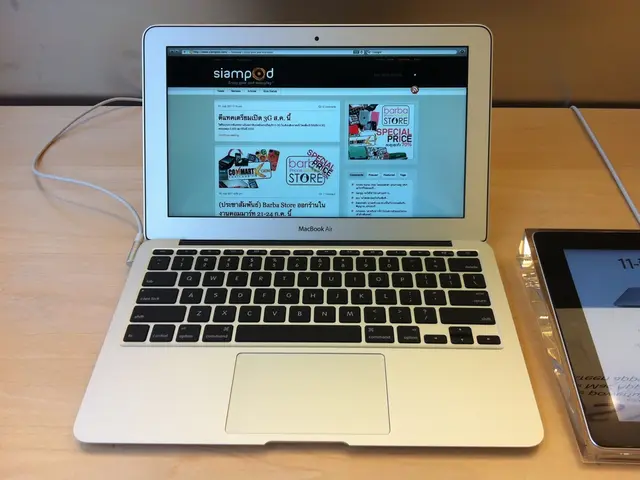Trump's Unexpectedly Favorable Stance Towards China
The ongoing US-China trade negotiations are primarily focused on addressing tariffs and China's export restrictions, particularly on critical materials like rare earth elements. The U.S. is seeking tariff reductions and loosening of Chinese export controls to improve the bilateral trade balance and address national security concerns.
China, being the dominant producer of rare earth minerals, is crucial for the production of electric vehicles and missile guidance systems. However, the U.S. maintains high tariffs on Chinese goods, with an average effective rate as high as 49% or even 145% on certain goods. Yet, China seems to be receiving somewhat more favorable treatment due to ongoing high-level talks aiming to reach a trade agreement.
Negotiation windows, tariff suspensions, and differentiated tariff structures reflect strategic considerations to incentivize China to agree to terms. This more complex and calibrated approach contrasts with the U.S.'s baseline imposition of a 10% reciprocal tariff on most other countries.
The large and persistent China trade deficit is seen as a threat to national security and economic stability, necessitating a combination of pressure (high tariffs) and negotiation flexibility (temporary suspensions and exemptions). Trade talks aim to reduce specific trade barriers, including China's restrictions on rare earth exports, which are critical to U.S. industries and defense.
Simultaneously, the U.S. is negotiating trade agreements and tighter rules with Southeast Asian countries to limit China's ability to circumvent tariffs via transshipment. This reflects a broader, strategic trade positioning. Despite talks, average U.S. tariffs on Chinese imports remain substantially higher than before the trade war started, indicating a tough bargaining stance balanced by negotiation opportunities.
Other countries face a uniform 10% baseline tariff under the reciprocal tariffs policy without the same level of negotiation-related exemptions or suspensions that China receives. This partly because China represents a larger, more consequential economic and strategic partner that requires a tailored approach.
The most contentious issue in US-China negotiations is avoiding a return to triple-digit tariffs (145% on Chinese goods and 125% on US exports). US-China negotiations are expected to benefit US firms while potentially sidelining key allies such as the European Union, South Korea, and Japan.
In other developments, the Chinese government is discouraging the use of Nvidia's H20 processor, a move seen as a public show of less reliance on US high-end technology. Trump has praised President Xi Jinping of China as "a strong leader." Han Shen Lin, China Managing Director of strategic advisory firm The Asia Group, warned against complacency from the Chinese side, as Trump’s actions may still contain unexpected moves.
Trump is urging China to quadruple its purchases of US soybeans. Chinese exporters are rerouting goods meant for the US through Southeast Asian countries to avoid direct US tariffs. INSEAD’s Fatas called on New Delhi to work with allies to show collective strength and secure a better tariff.
The tariffs on China have been capped at 30%, while countries like India and Brazil face up to 50% tariffs. The US has imposed a sweeping 40% transshipment tariff on all nations suspected of facilitating Chinese rerouting of goods. US President Donald Trump has extended the tariff pause on China until early November. China imposed export controls on seven rare earth elements and permanent magnets in response to US tariffs.
- China, being the dominant producer of rare earth minerals, is crucial for the production of electric vehicles and missile guidance systems, not only in Asia but also globally.
- Amidst the US-China trade negotiations, America seeks to address the tariffs and China's export restrictions on critical materials like rare earth elements, aiming to improve the bilateral trade balance and address national security concerns.
- The world is closely monitoring the US-China trade talks, with the general news reporting on various strategic considerations, such as negotiation windows, tariff suspensions, and differentiated tariff structures.
- As European countries, we should be aware that US-China negotiations may potentially sideline key allies such as the European Union, South Korea, and Japan, emphasizing the need for policy-and-legislation adjustments in our own trade relations with China.
- The use of artificial-intelligence and technology in trade negotiations is increasingly becoming a focus, with the Chinese government discouraging the use of Nvidia's H20 processor to show less reliance on US high-end technology.
- War-and-conflicts and the use of technology can intertwine, as demonstrated by the US imposing a 40% transshipment tariff on all nations suspected of facilitating Chinese rerouting of goods, creating new challenges for global trade.
- Despite the US extending the tariff pause on China until early November, India and Brazil face up to 50% tariffs, highlighting the need for Europe to work together, as suggested by INSEAD’s Fatas, to secure a better trade position in the ongoing global economy.







